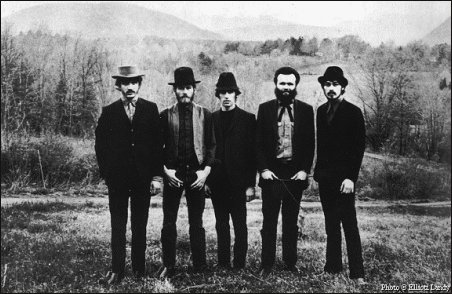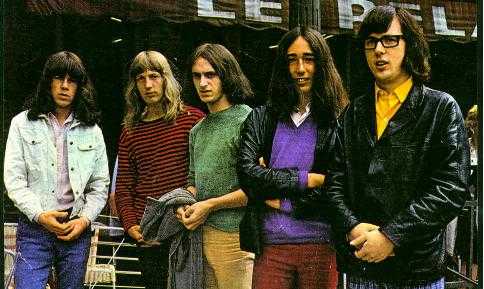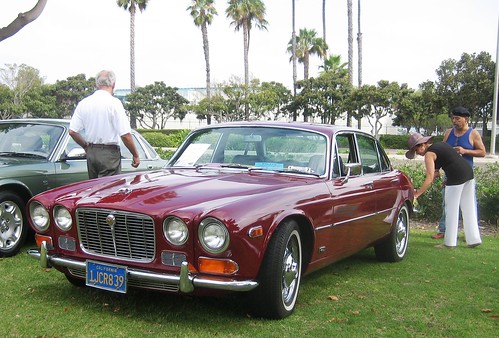By Noah Mallin
Continuing on our trip 40 years back into the tumultuous past, here is part one of the best albums of 1968 in no order whatsoever.
1) Aretha Franklin - Lady Soul
Most soul albums at this time were collections of big hit singles with lesser tracks sprinkled in as filler. A few performers were so good that even their minor tracks made for a great album experience and Aretha was one of them. 1967 was the year she burst onto the scene on Atlantic records after an unhappy stint at Columbia. Lady Soul includes a few of that previous year's hits like the impassioned "Chain of Fools." It also includes the groundbreaking "(You Make Me Feel Like) a Natural Woman" a song described by critic Dave Marsh as an ode to the female orgasm. Even her cover of The Rascal's "Groovin" finds her in peak form with a suitably clever re-arrangement that brings out the soulfulness in the song.
2) Rolling Stones - Beggar's Banquet
The Rolling Stones made the first flop of their carrier with 1967's Sgt. Pepper's aping LP Their Satanic Majesties Request. They also found themselves at odds with founding member Brian Jones who seemed to still think himself as the band's leader despite Jagger and Richards writing the vast bulk of their original material. Beggar's Banquet was repped as their return to roots, a popular notion in 1968 (rivals The Beatles would begin recording their own back to basics album by the end of the year, the aborted Get Back which would see the light of day in 1970 as Let it Be.) It's hard to describe this as a return to the blues of their early albums because the band had utterly transcended imitation to discover their own gritty supercharged sound. Beggar's would be the first of four classic albums that represent the peak of the band's achievements. Beggar's features almost no playing by Jones, with the guitars overdubbed brilliantly by Keith Richards. The highlight of the album is arguably "Sympathy For The Devil" but "Street Fighting Man", "No Expectations" and "Jigsaw Puzzle" are just a few of the major tracks here.
3) Dr. John - Gris-Gris
Dr. John was just one of the many incredible performers who learned their trade in the music clubs of New Orleans. Starting in the late 50s he plied his barrelhouse piano skills from clubs to bars across the city. For his first album Gris-Gris he had already dubbed himself "The Night Tripper" and fused elements of psychedelia, traditional New Orleans R & B , voodoo nuttiness, and whatever else popped into his head. After 40 years as a recording artist this is still the most compelling and far-out record in his catalog with the 7-minute plus "I walk on Guilded Splinters" a particular treat.
4) Caetano Veloso – Tropicalia

5) Van Morrison – Astral Weeks
Van Morrison cut the cord from his garage band Them with his first record for Warner Bros, Astral Weeks. The lush, long songs take folk into jazz and classical directions, expertly arranged and played. In many ways the current "freak folk" of Devendra Banhart and Sufjan Stevens can find it's roots in the expositional meanderings of Astral Weeks.

6) The Band – Music From Big Pink
The blandly named The Band earned their chops as The Hawks playing backup for rocker Ronnie Hawkins in the early 60s. When Bob Dylan wiped out in a motorcycle accident he joined them in their house in Woodstock New York, Big Pink, and laid down reels of music that later found release legit and otherwise as The Basement Tapes. Their first album as a unit defined the back to basics aesthetic that inspired many musicians in 1968, the timeless melodies and straightforward approach of songs like "The Weight" and "In a Station" suggesting tunes going back a century or more. This was heightened by the Levon Helms and Rick Danko's timeworn voices and the inventively simple instrumentation.

7) The Outsiders - CQ
The Dutch are well-known for all kinds of hedonism but rocking out (Golden Earring notwithstanding) is not one of them. The Outsiders are one of the great unsung bands of the 60s, a garage band that found their own way to integrate psychedelia and even pensive folk elements into their albums without losing site of great hooks and crunchy guitars. CQ was sadly their last album and also their best.

8) The Jimi Hendrix Experience – Electric Ladyland
Hendrix had exploded onto London's music scene in 1967 with a series of mindbending live shows and two stellar albums. By 1968 he was a superstar and looked to push his bandmates to their limits and beyond for what would prove to be their last album together, the double LP Electric Ladyland. The record is famed for the "underwater" sound Hendrix pushed for, with radical studio tricks matching his wildly fierce guitar playing. His cover of Dylan's "All Along The Watchtower" was so revelatory that Dylan himself essentially covers Hendix's version when he plays it live.

9) The Beatles – The Beatles
Like the Stones, the Beatles had also received their first setback in 1967.After the huge success of Sgt. Pepper's they conceived the television film Magical Mystery Tour, released at the end of the year to a critical savaging. An ill-fated retreat with the Maharishi Mahesh Yogi did have a salutary effect on the band's songwriting with each member coming back with a clutch of songs (even Ringo had two!). The Beatles a double LP popularly known as The White Album after the stark white sleeve, showed the unwillingness to whittle down what each songwriter had. In fact the band had become backing musicians to whoever's song was being recorded on a particular day. This led to their most varied and for some most fascinating record yet. A young Jann Wenner described it as encompassing the whole of popular music up to that time and with heavy proto metal like "Helter Skelter" jostling with the gorgeous psych-folk of "Dear Prudence", the Beach Boys pastiche of "Back in The U.S.S.R." and the 30s style "Honey Pie" the band's reach seemed limitless.

10) Silver Apples – Silver Apples
Every electronic music artist from Kraftwerk through Suicide on down to Daft Punk and Aphex Twin owe a huge debt to this pioneering new York duo who first fused pop music sensibilities with the electronic experimentalism of the musical avant-garde. Though far from popular the droning shifting oscillations and pulsing beats of their debut album held enormous influence and still sounds contemporary and riveting today.








 Pininfarina has long enjoyed its status as Ferrari's favored design house. The P6 concept was both of its time, particularly in the roof louvers, and a window into future Ferraris. The sculpted side indents would find their way onto models like the 308 in the late 70s and the front end shape was echoed in the Berlinetta Boxer in the early 70s. The smooth wedge shape hinted at the importance aerodynamics would begin to play over the following two decades as well.
Pininfarina has long enjoyed its status as Ferrari's favored design house. The P6 concept was both of its time, particularly in the roof louvers, and a window into future Ferraris. The sculpted side indents would find their way onto models like the 308 in the late 70s and the front end shape was echoed in the Berlinetta Boxer in the early 70s. The smooth wedge shape hinted at the importance aerodynamics would begin to play over the following two decades as well.




 The Cutlass was Olds family car, though the fire breathing 442 model was not to be trifled with. This was the best looking of GM's new intermediate bodied cars for 1968. Long, low and wide, they met the standard for typical Detroit design at the time but added great detailing like the hood and tapered rear deck and headlight clusters.
The Cutlass was Olds family car, though the fire breathing 442 model was not to be trifled with. This was the best looking of GM's new intermediate bodied cars for 1968. Long, low and wide, they met the standard for typical Detroit design at the time but added great detailing like the hood and tapered rear deck and headlight clusters. Not to be confused with the awful Phoebe Cates film Princess Caraboo, the Bertone Carabo concept was Italian design at its most radical. Silly yes, but breathtakingly so. Again we have louvers like the comparatively restrained Ferrari P6 concept but here they are all over the rear like the Batmobile in safe mode. The wedge design is the ultimate in edgy and the scissor doors had not yet become cliche.
Not to be confused with the awful Phoebe Cates film Princess Caraboo, the Bertone Carabo concept was Italian design at its most radical. Silly yes, but breathtakingly so. Again we have louvers like the comparatively restrained Ferrari P6 concept but here they are all over the rear like the Batmobile in safe mode. The wedge design is the ultimate in edgy and the scissor doors had not yet become cliche.


























